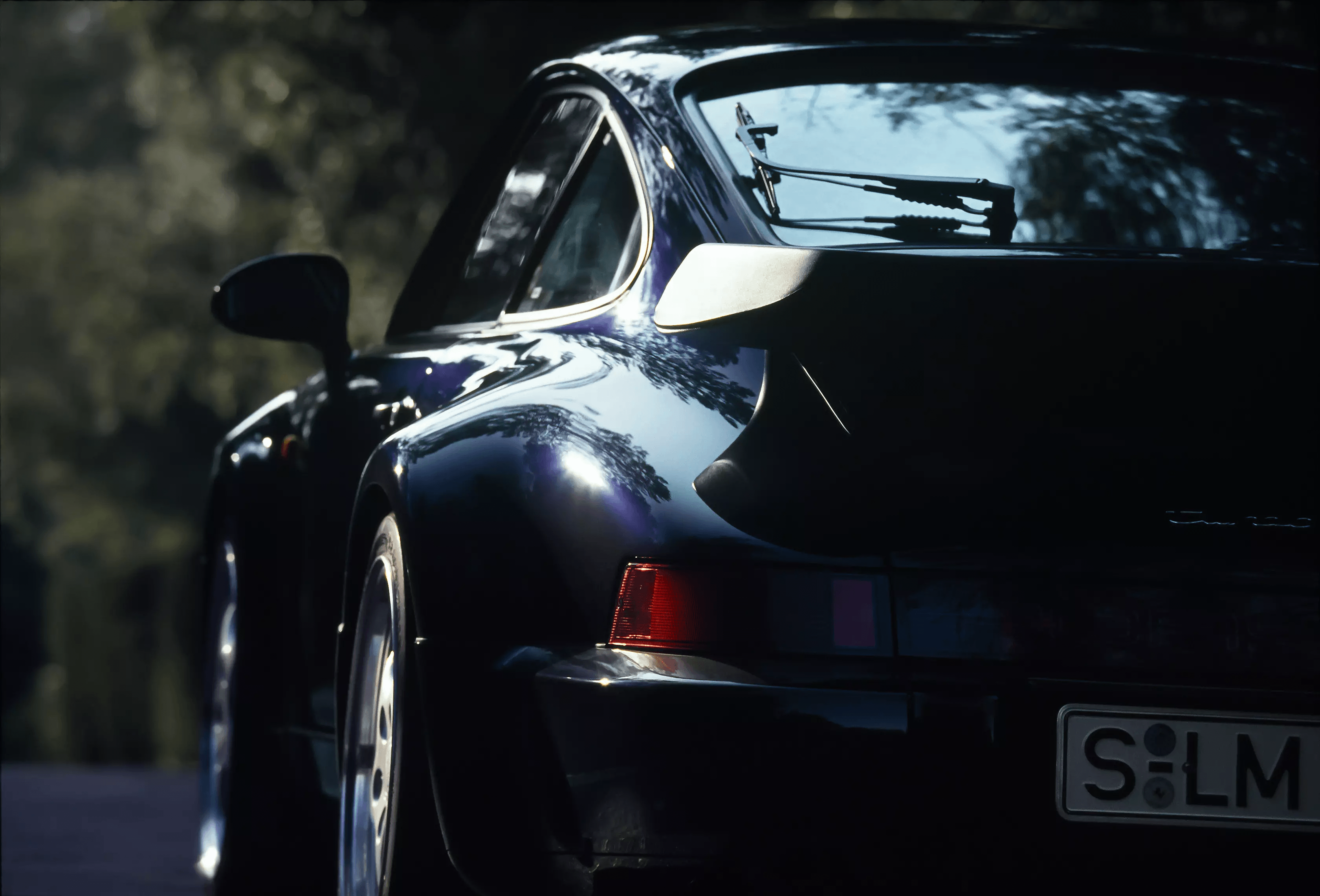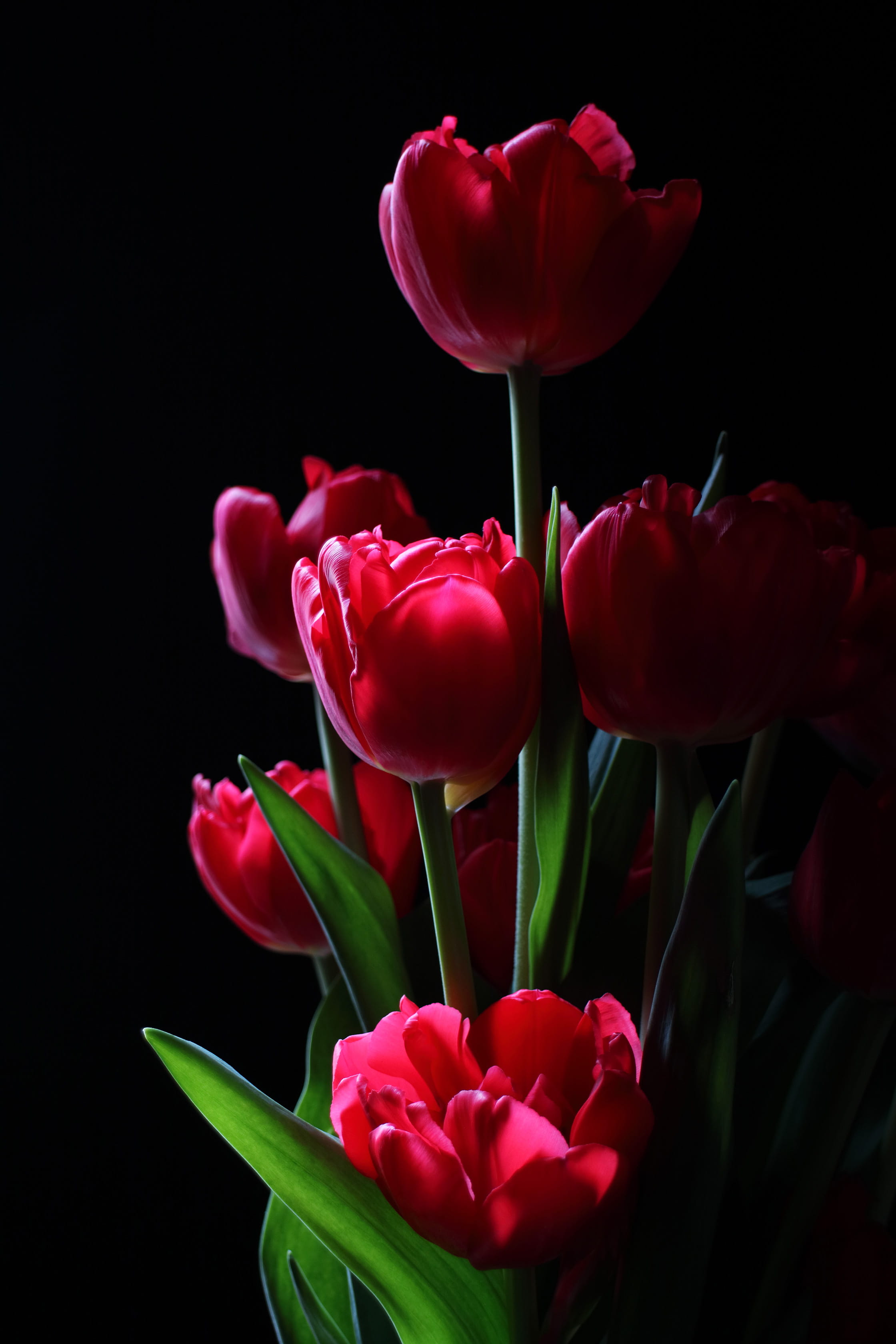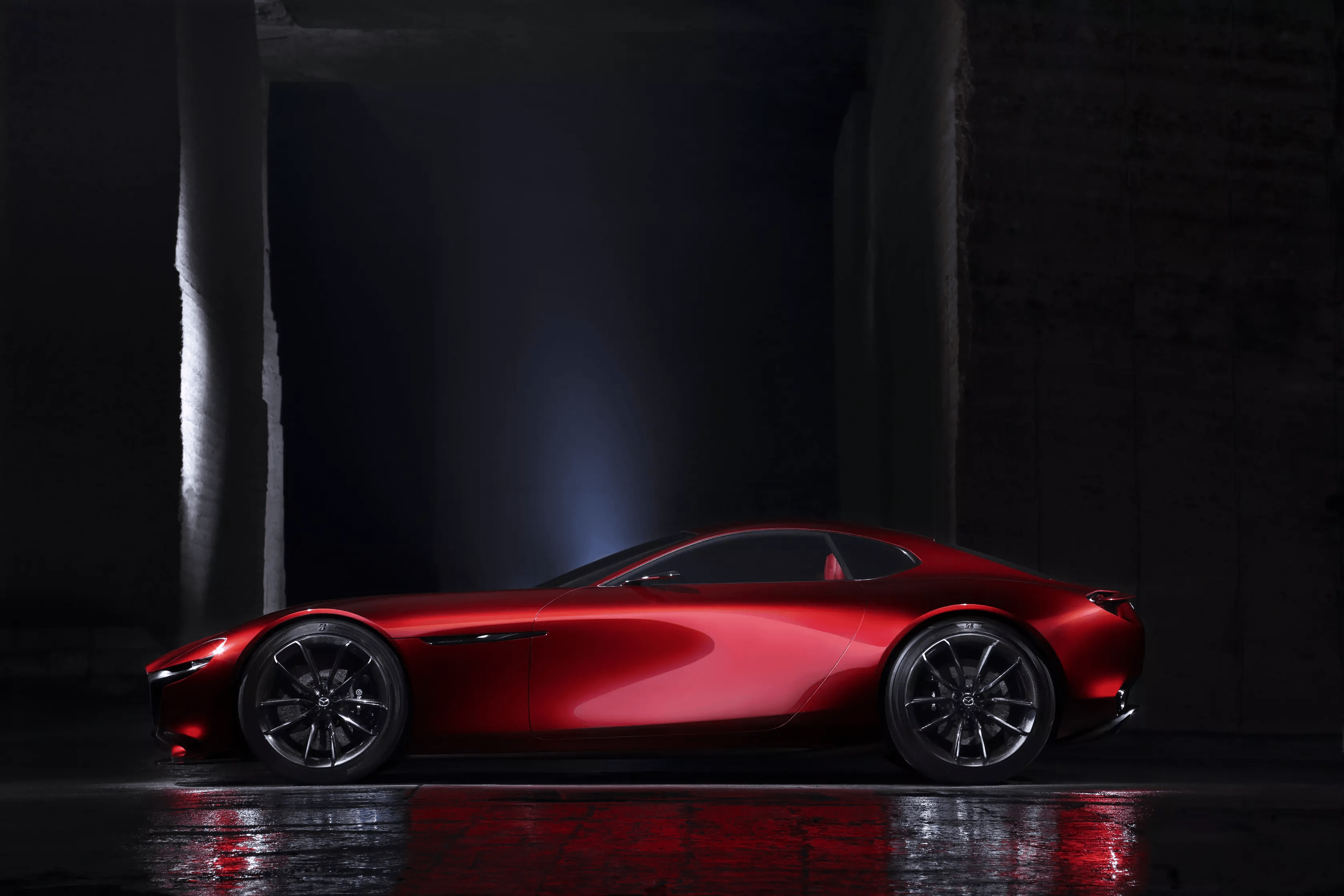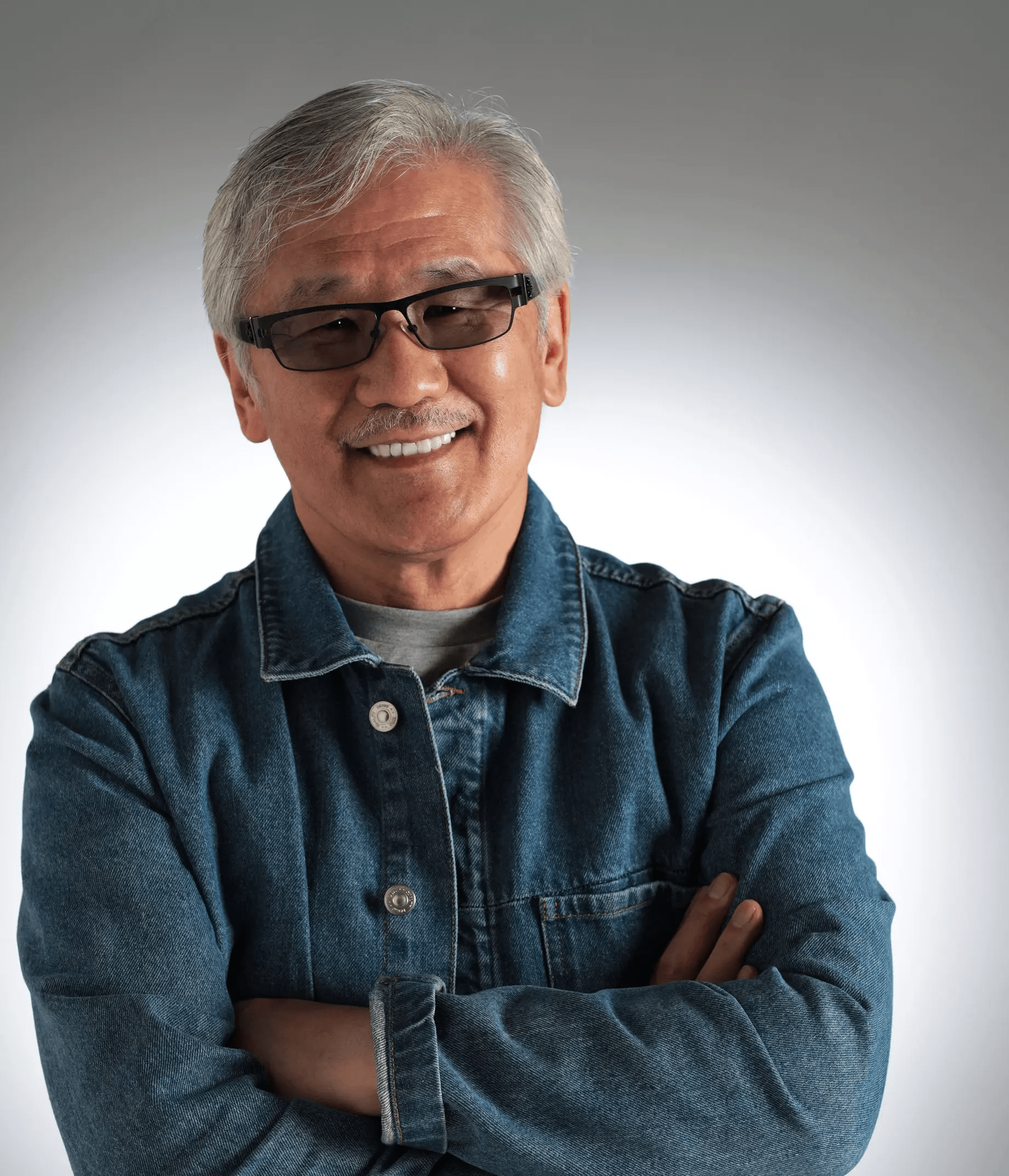The True Formative Beauty of Cars that Can Be Appreciated through Stories Woven by Light, Shadow, and Color

Keenly observing a subject to reflect this very day in the photograph
Taking photographs of cars involves converting a three-dimensional object into a two-dimensional image. A key tip for successful photography is to control this three-dimensionality by using light and shadow. It is therefore important for photographers to cultivate their faculty of observing the subject matter.
First, before starting photography, I make it a rule to approach the car that I am going to shoot, to make careful observations of it. While closely looking at and touching the car, I can discover, for example, that it has a glossier and darker color than I imagined, or that its surface has a texture that feels warm. Such attempts to identify the most appropriate distance from the subject will help develop acute observation skills.
Another essential element in taking photographs of a car is the inadvertent appearance of something other than the subject in the picture, although this is usually considered unfavorable in other photography situations. When a car drives through an urban area, it is natural that the surrounding scenery should be reflected on its body. I therefore intentionally allow these cityscapes to come out in the photograph as a background. This can also amplify the stereoscopic effect of a two-dimensional photograph. However, this does not mean that you should merely let skyscrapers and roadside trees appear in the pictures. I would suggest that you try to capture “this very day” in your photograph—including the shadows cast by buildings and the position of the sun at the time of shooting, as well as the day’s temperature. Taking such an attitude to photography will enable you to create works filled with a sense of realism.

Mr. Ogawa offers advice on a useful technique with which ordinary people can take good photos of their cars. He says, “It would be better not to use front light (light emitted from behind the photographer). Instead, after simplifying a busy background, you should use semi-backlight (light that strikes a subject matter from the back at an angle of approximately 45 degrees to the subject). Since it will produce both illuminated and shadowed areas in the scene, you can emphasize the three-dimensionality.” According to him, this is one of the basics for professional photographers in determining the direction of light in order to beautifully reproduce the subject.
Multifaceted approaches to understanding the subject helps you to identify the optimal photographic conditions
Whenever taking car advertising photographs, I devote myself single-mindedly to producing “works that appeal to viewers and uplift their spirits.” To this end, I always strive to be very knowledgeable about the mechanism, design, and color of the car to be shot.
To deepen my understanding of a car, it is primarily important to know about the various factors behind the car, including its country of origin’s economic and political histories, resources, technologies, and environmental and other social issues confronting the country. Based on such knowledge, I further ask myself, “What kind of thoughts did the designers and engineers have when they developed the car?” Then, I can visualize the most suitable shooting scene for the image of the car.
In other words, a decisive picture cannot be produced by chance, but can be created by elaborate work, just like a key scene in a movie. I believe that the best shot taken through this kind of approach will reflect the creator’s passion and his/her aesthetic sense, which will capture the hearts and minds of those who view the photograph.

A Mazda concept car. To photograph the car in a desolate atmosphere, it was brought into a cavern located 30 meters below ground at the former mining site of Otani stone, in Tochigi Prefecture. With only two weeks to go before the motor show, the camera crew dared to carry out this photography project aiming at expressing the Mazda car designer’s distinctive view of the world.
Finding out the intention hidden in symbolic colors
Alfa Romeo, Ferrari, and other leading Italian automobile manufacturers often use red as their iconic color. Their legendary cars are pained in rosso (red), which gives a passionate impression and convinces everyone that “that color is the obvious choice,” forming fascinating and original features that cannot be found in other vehicles.
These carmakers select an iconic color that is best suited to their cars and use a national color that represents the country’s characteristics for their car bodies. This is because these manufacturers are aware that their cars are greatly connected to their country, the times and social background, and that employing such colors will provide them with invisible persuasiveness.
If you can understand that the colors of car bodies are actually determined by various background factors, you can clearly see the relationship between cars and color. This also holds true to the colors and designs of diverse everyday products.
A color created by layering multiple paints highlights formative beauty
Many years have passed since I became a professional photographer. However, my passion for exploring light, shadow, and color grows stronger and stronger. Taking an automotive paint as an example, there is no simple answer to the question, “What color is it?”
The color of a car body we see is completed after going through several automotive coating processes. First, the auto body is coated with an anti-corrosive paint and then an undercoat paint. Next, a paint for intermediate coating is applied to the body to make its color look more beautiful. Finally, the car body is colored with a paint for finish coating. As a result, an automotive coating film is formed that may comprise three to five layers.
In other words, a single body color finished with a beautiful appearance is created by layering multiple paints, each of which has individual functions and roles. Furthermore, to our surprise, the automotive coating film is only around 0.1 mm thick. When we see a car start to move off, we feel as if its body color were flowing smoothly. This exemplifies the attractive features of paints and professional skills to make the most of them.
Of all car body colors, I like silver metallic the best. Every time I see a silver metallic body, I am enchanted by the sensuous color that is reminiscent of falling drops of light, and impressed with the superb paints that further enhance the formative beauty of cars. I also realize anew the relationship between automobiles and color.



